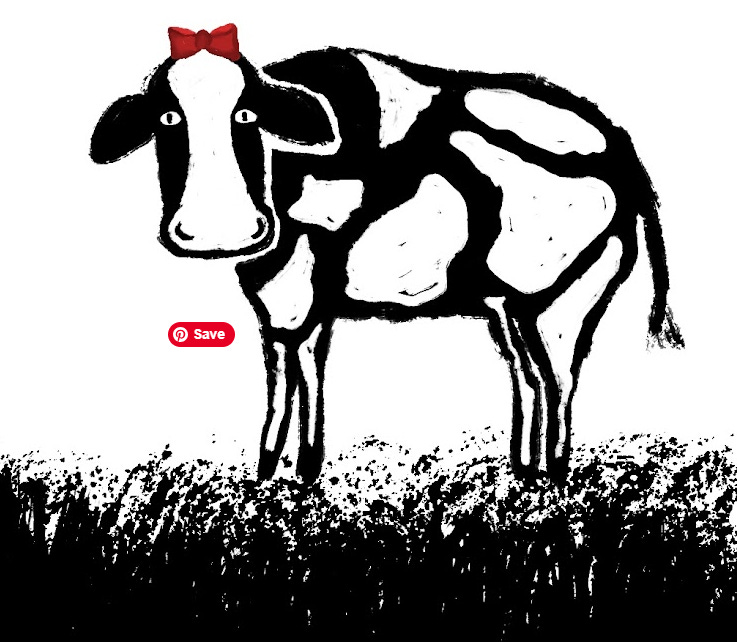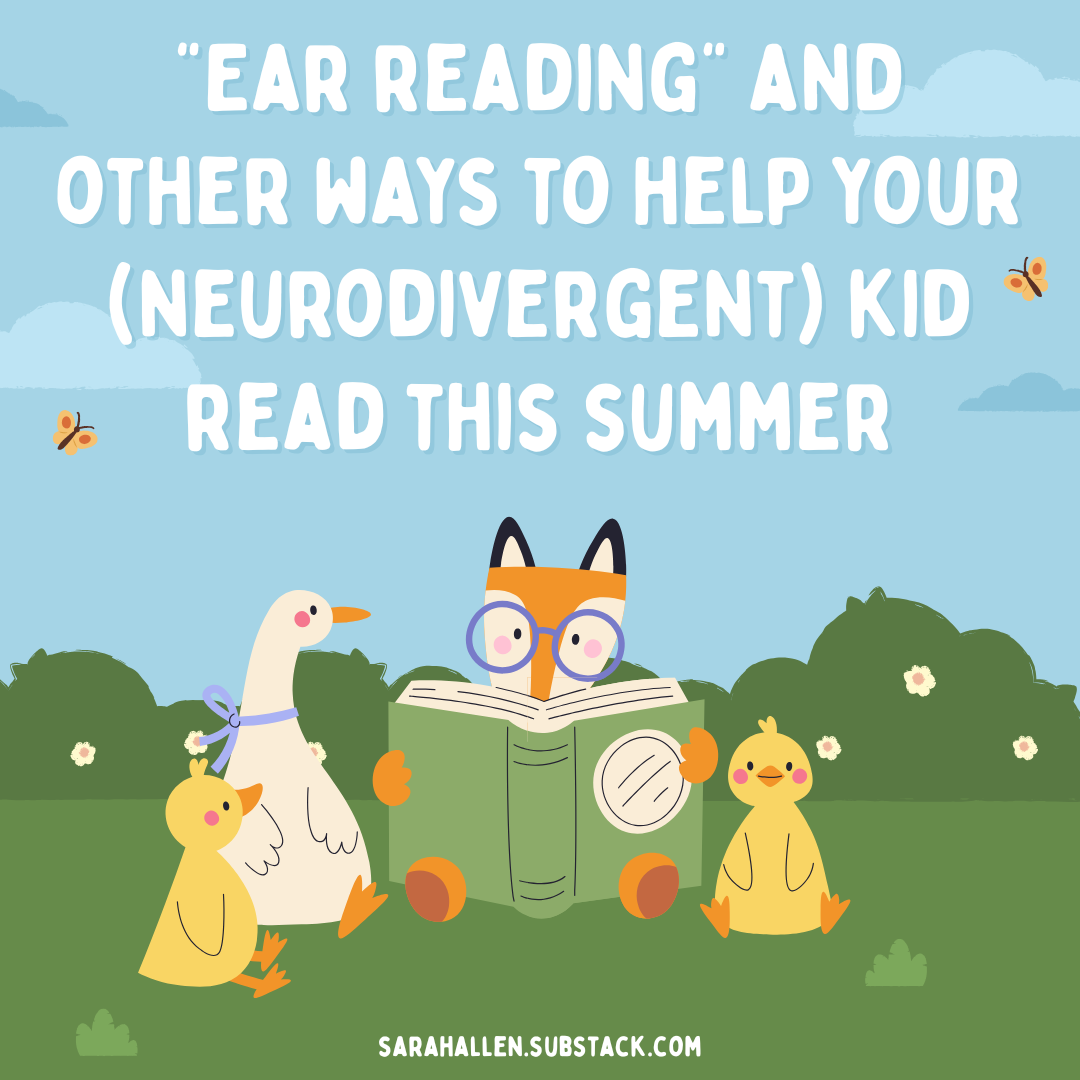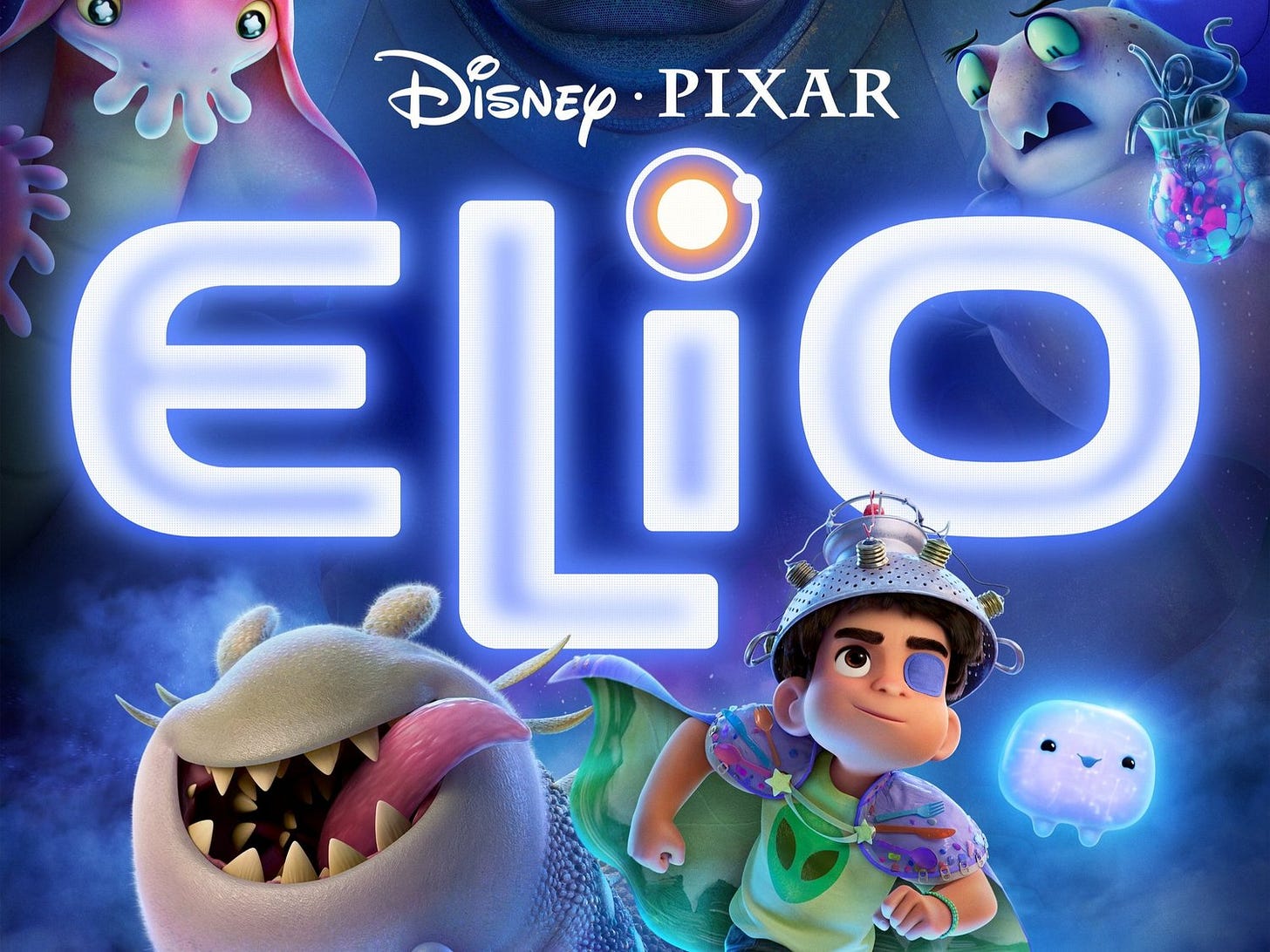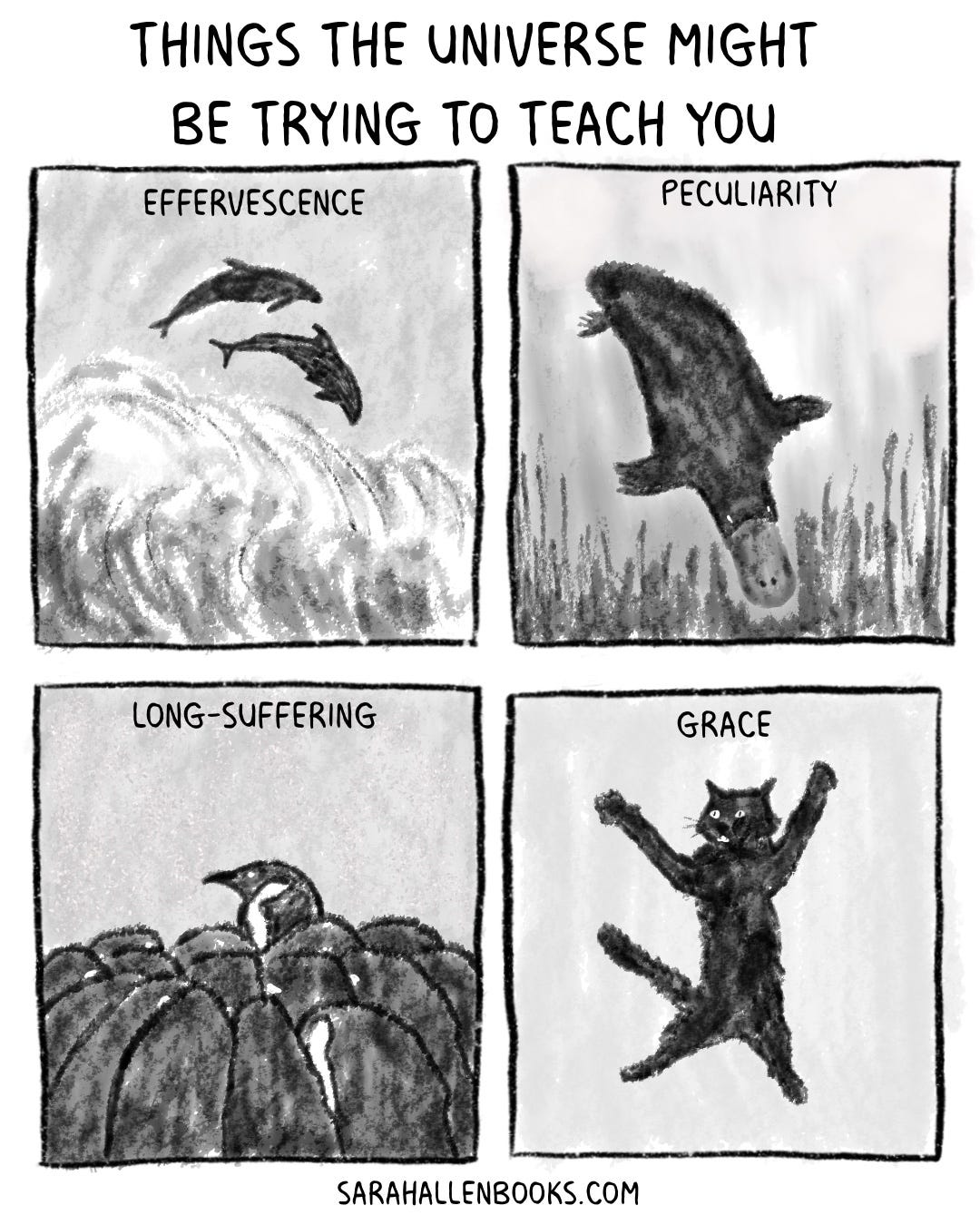"Ear reading" and other ways to help your (neurodivergent) kid read this summer, with language therapist Kathy Tenney
And learning to draw with a spatially-inept brain.
From the Writing Desk:
The most challenging part of working on my current quirky lower middle grade WIP hasn’t been the writing. That part has actually been going quite smoothly. Slowly, yes, but smoothly.
Nah, the most challenging part has been the art.
I was absolutely obsessed with Shel Silverstein and Gary Larson as a kid. I’ve wanted to be able to add some sort of visual element to my writing for nearly as long as I’ve been writing books. Like what Cressida Cowell does. I wanna do that!
The trouble is, one of the key factors of non-verbal learning disorder is issues with visual and spatial awareness. “Many kids with NVLD have trouble understanding visual imagery. For example when they are asked to copy a shape like a cube they produce ‘profound distortions.’”
Not exactly ideal for learning to draw.
I would love to be able to sketchy whimsy sketchy sketch like Cressida and Shel and use shapes and shading and hatching like Gary does. I’ve been doing online art classes and practicing off and on for a few years now, and trying to figure out how to hold two thoughts in my head simultaneously:
First—I’m not ever going to be a Gary Larson or Shel Silverstein or, gosh, Don Wood or
. If only. I’m just not. The most frustrating times as I’ve been trying to teach myself to draw remind me of the near decade of piano lessons I took as a kid, where I would practice and practice, and then come back the next day feeling like I was starting from scratch all over again. And I really don’t think this is one of those “Yes you can, Sarah, you can do it, just keep practicing, you’ll get there,” type of things. I wish it was, but in this case, like the Gallup Speed-reading test illustrates, fighting against our own strengths and weaknesses is not very productive.Second—Like my mom has told me before, a bumble bee doesn’t know that, according to the laws of physics, it shouldn’t be able to fly. I can’t do what Shel and Gary and Cressida do. But I can do something dangit. I’ve followed tutorial after tutorial of the typical cartooning method—drawing the undercircle of the head, the bifurcating lines, etc. And when I try and replicate that process in something else…nope. So there’s got to be a different way. A method of creating art that works around my mental gaps.
A way to do this smarter, not harder.
I’ve been trying to figure this out for the last few months, and this last month in particular. If I’m going to pitch myself as the illustrator of my current book, I need to be able to not only design a character I like, but be able to replicate that same character in different positions and poses and expressions throughout the book. Consistently.
I’m still figuring it out. I’m still refining my methods and strategies and processes. But I think I’m closer now than I’ve ever been. I’m leaning into a process that maybe feels more like 2D sculpting than drawing? A process where I can plop shapes down and then erase and add in bits, and stretch and move and experiment with layers until it morphs into the right shape, even if I couldn’t draw the right shape. That doesn’t rely on me getting the 3D shape right in my head with shading and lighting, etc. Blobbing, not drawing.
I might talk more about all of this later on, but yeah. This is what I’ve been working on and am still working on. It’s likely more painstaking than other processes, but…I think it’s working?? I don’t think I’ll ever feel like a “real artist,” or that I know what I’m doing, and who knows what editors and art directors etc will think, but…here we go!
I have some sillhouetty, stamp-like, high contrast characters developing for this quirky book that I can’t wait to show you :)
What are you working on?
Onward!
The Smorgasbord is a hand-kneaded, hand-shucked, reader supported publication. If you’d like to tip your waiter and keep the kitchen cooking, become a paid subscriber and help make this meal possible! Plus get access to special publishing resources, writing classes, the query letter that got me 4 agent offers, and more!
"Ear reading" and other ways to help your (neurodivergent) kid read this summer, with language therapist Kathy Tenney
Wow wow, guys. We’re all interested in helping kids find reading joy, and today we have a true expert.
Kathy Tenney is a Certified Academic Language Therapist, Qualified Instructor (CALT-QI). In her own words: “I help people with dyslexia and related disorders, and train graduate level students to do the same thing. I was an elementary school teacher, and when my oldest couldn't learn how to read, and I tried teaching him with what I'd been taught in college with no success, I returned to school to learn how to help him. I've been helping kids become readers and writers ever since, for over 30 years.”
Kathy is also the founder of Dyslexia Therapy Utah. I absolutely loved getting her wisdom about how to help all kinds of kids love reading. And for you parents trying to incorporate some sort of summer reading in your family plan, I thought this was a perfect time to get her expertise.
Welcome, Kathy!
1: Give us a quick basic overview of what you do as a Certified Academic Language Therapist?
I teach the structure of the English language, starting with the basic, predictable patterns, using as many senses as possible, with lots of repetition. I gradually move from the most reliable predictable patterns to the less common patterns, while adding in prefixes, suffixes, syllable division patterns, and more; while teaching comprehension strategies along the way. As a therapist, I can make individual adjustments according to the needs of each student.
2: Are there things that authors can do in their books to make them appealing to the kids you work with? Are graphic novels really more accessible?
There is a great need for more books that are high interest, yet easy to read. Students that struggle with reading want to read books that appeal to their interests, but cater to their need for easier, decodable words, as they gradually work on increasing their words that are automatic. A dyslexic student needs extra repetition before a word becomes automatic in their brain, with some needing 40X more repetitions than a typical reader.
Graphic novels are appealing to a lot of these students. The book appears thicker, matching the chapter book sizes their peers are reading, there are less words on the page, and it is often easier to keep their place as they are reading. The word choices in graphic novels, ideally, would be easier to decode, but that isn't consistent in all graphic novels.
3: Parents are often looking for ways to keep their kid reading over the summer. You work particularly with kids with language difficulties, but based on your experience are there any overall strategies you'd recommend?
The end goal of reading is getting knowledge into the brain. If reading comes easily for a student, they can get that knowledge in faster by reading. For those that struggle with the written word, it is faster and more engaging for them to LISTEN to books. Audio books are a gift to dyslexic individuals, allowing them access to the same books their peers are enjoying. Audio books provide kids with access to rich vocabulary and world knowledge.
Most of my students actually listen to audio books at higher speeds than their peers (my son once shared that the fast speed keeps his mind from wandering), so they can actually listen to books faster than their peers, with great comprehension. Granted, this varies child to child, but audiobooks, or "ear" reading, keeps kids engaged with their interests, building a richer vocabulary, and deeper knowledge while they are working on improving their "eye" reading.
*Is this a good time to remind you that two of my books come in audio form?? ;) What Stars Are Made Of and The Nightmare House.
4: What is something odd or unusual that's bringing you joy lately?
I collect Duplo Legos, and love finding retired pieces that are missing from my collection. I also use Duplo Legos as I teach. They work great for breaking a word into its sounds, and then spelling the word ON the duplo with dry erase markers. The red squares represent vowels, other random colors represent different sounds within a word.
Thank you so, so much Kathy! Visit Dyslexia Therapy Utah to learn more about Kathy and her amazing work!
What I’m Reading:
YOU GUYS. This book. I absolutely loved it. One of the most special middle grade books I’ve read in a while. It’s got a starred review from Kirkus and was one of Amazon’s best children’s books of 2025 so far. It’s about a between life and death fox who escorts the lost souls of dead animals to the appropriate realm of the afterlife, until a new soul arrives that changes everything. It’s just such a beautiful book.
What I’m Watching: So I saw Elio. It’s gotten more press after it came out for being Pixar’s lowest at the box office than I ever saw before it came out, promoting the actual movie. That’s a shame, because I really enjoyed this one. It’s not Pixar’s best, but it is definitely better than some of the more recent ones. Highly recommend going to see it in theaters. Do a double feature with this and How To Train Your Dragon, which is also excellent. (Not as good as the original, but still good. Mason Thames did a great job.)
How To Draw Cartoons: This channel is a new discovery and I think it’s pretty fun and delightful. The videos are shorter than most tutorials and fun and easy to follow. Great for teaching yourself some cartooning skills and/or for young budding artists. (Even with my Can’t Shapes Brain, it’s still been really helpful to see other people’s different processes and the more traditional cartooning process so I can sort of deconstruct it and build it into a process that works for me).
What I’m Drawing: Things the universe is always trying to teach me.
Also check out the bookish swag I’ve got up for sale in my new little swag shop!
“Clouds come floating into my life, no longer to carry rain or usher storm, but to add color to my sunset sky.”
― Rabindranath Tagore, Stray Birds
Writing Opportunity: Write dark fantasy? Check out this short story anthology opportunity from Wordsmyths! Due July 31.
Teacher’s Table
Some goodies especially for the teachers:
Summer Reading Challenge for fifth grade with book list EDITABLE Printable Log
Everything needed to get your young writers started is here in Tools Not Rules: A Writing Guide for Young Creatives.
Free activity sheets up on my Teachers Pay Teachers store! More added all the time, so check back regularly.
I am so, so excited and honored to now be on the roster at the Macmillan Speakers Bureau! For school and other events, you can find my speaker page here.
You guys are rock stars!
Thanks for coming along everyone! The best way to support is to 1) subscribe, 2) get a copy of the book bebes, and 3) keep glowing, you shining star you.
-Sarah













Loved all of it as ever, but I think my favorite part this time was the cat illustration for "grace" hahahahaha!! I also love how amazingly weird platypi are. Platypuses?
I also get the drawing difficulties. People think I must be good at drawing but I'm not. I haven't put forth the study necessary to be a good drawer. I don't really see images in my head so I can only draw from memory if it's something I've drawn a thousand times or have really studied hard and memorized. I can't just think of something and draw it, and even if I'm using references, I'll forget what it looked like in the time it took to look from the reference to the paper. I think in vibes and essences of things, Maybe I should just try arting in vibes and not try to get it correct. I'm excited to try the how to draw cartoons link though! I've got a cuople of MG graphic novel ideas I've been afraid to try because I know it will take me sooooooo long to draw each panel.
I’ve been wanting to read that undead book! And I love your art - keep making only what you can make!!!